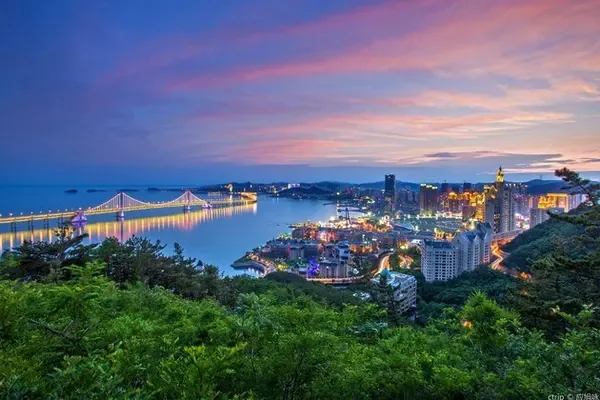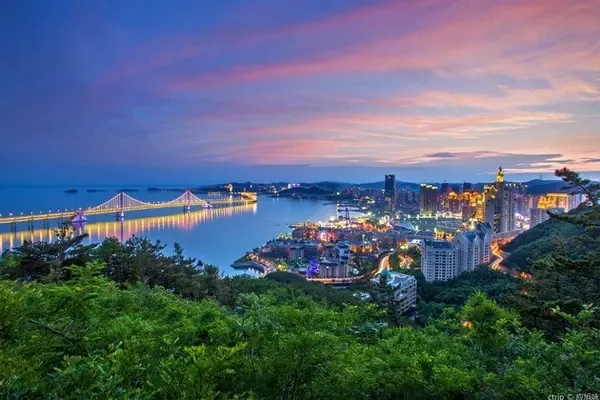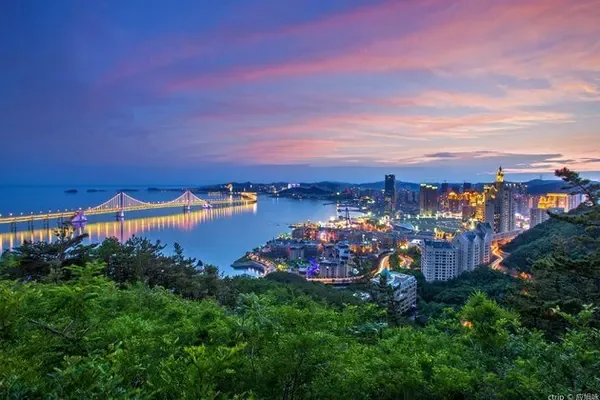What is "sprinkling"? "Salie" is a cultural tourism brand in the Qamdo area. It has the same meaning as the "playing dam" and "Shai Linka" in the Lhasa area. They both refer to the season of warm spring or sunny days. My favorite relatives, best friends, and most beautiful girls come to the most beautiful place to enjoy the best food in Kham and watch the happiest singing and dancing in Kham. Here is the most harmonious and beautiful state of mind of Kham people.

Although I have been to Tibetan areas many times, I have not experienced it personally because of time constraints. This time I came to Changdu Jiangda, just in time for the first "2021 Changdu Salie Brand Marketing and Promotion Campaign" held by Jiangda. It must be experienced in due course.

The event was held at the Sangzhu Salie Camp in Jiangda County. Enthusiastic audiences from nearby villages came to join in. It was really lively. The handsome Kham man and the beautiful and soft Zhuoma from the Jiangda County Song and Dance Troupe were present for everyone Performances of special songs and dances, the singing and dancing performances made the scene burst into thunderous applause and pushed the atmosphere to a climax many times.




There are also local special Salie brands on the side, such as some local special snacks, such as beer that cannot be separated from Salie. The new brand "Zhuozhuo Kangba Highland Barley Beer" launched in September in Dingqing County made a high-profile appearance. All the friends present tried the taste of the beer, and we were no exception. This tasting made everyone full of praise .
Everyone thinks the taste is quite good. First of all, the fusion of highland barley and malt is amazing. The aroma of malt and highland barley fusion is more mellow than pure malt. It has more complex flavors to make the taste very rich, and this beer has a high alcohol concentration. It has 3.7 degrees, surpassing many other state-owned brands. Some state-owned brand beers taste like drinking water, with a faint taste. This "Zhuo Zhuo Kangba" beer from Dingqing County is really exciting, with a strong aroma , the foam is dense, and the two small cups make people drunk.


There is another important part of Salie, which is to enjoy the food. The barbecue at the Sanzhu Salie camp is really unique! And here is do-it-yourself grilling. The camp provides all marinated and chopped ingredients, charcoal fire and barbecue grills. It feels very good to have enough food and clothing by doing it yourself. It seems that the roasted taste is even more delicious. It is served with Zhuozhuo Kangba barley beer, beef, mutton, chicken and pork, a mouthful of meat and a mouthful of wine. Sitting on the green grass, basking in the comfortable sun, overhead It's blue sky and white clouds, and the snow-capped mountains are in the distance. These days are like gods, so don't be too comfortable!






There is a single room in Sangzhu Salie Camp, which costs 80 yuan a night. There is no air-conditioning. The room has a bathroom with hot water for bathing, and you can also take a bath in winter. There are two grades of meals: 45 yuan per person and 65 yuan per person. The standard of this meal is not all barbecue, but also table meals. Table meals are stir-fried vegetables, and the taste is super good! Tent rental fee: If you don’t want to stay in the sun all the time, you can rent a tent. The big tent can seat more than 30 people for 400 yuan, and the small tent can seat about 8 people for 200 yuan. There are also parasols for rent, and the extra charge is 100 yuan. People charge dozens of yuan less. Generally, tourists who come here choose to eat here and do not bring their own food. They are mainly tourists from Jiangda County. Salie Camp is being expanded, and another place with hot springs and more than 50 rooms will be newly developed.




Do you think you can only eat and drink in the Sanzhu Salie camp? There are still many places for tourists to visit around it. Near the Sangzhu Salie Camp, there are Guopu Baizong Mountain, Xiawu Village, Jirong Grand Canyon, Sejiong Temple and other scenic spots. Let me introduce it to you.
The Guopu Baizong beloved by Master Lianhuashan
We came to Guopu Baizong Mountain for sightseeing. It is said that this mountain was once the holy mountain where Master Lianhua practiced.
It takes about three hours to walk around this mountain. Along the way, there are tiger caves, Gawu caves, ape-man toilets, right-handed conch, lianhuasheng practice caves, body-protecting Buddhist niches and other natural landscapes. It is also the source of Baizong Yongquan mineral water. .
The vegetation here is dense and the air is fresh. It is a resort for nourishing the lungs and washing the lungs in the plateau area. The best thing about Jiangda is that the vegetation is very lush, the oxygen content is high, and the symptoms of high altitude are not serious, which is really rare in the Tibetan plateau area.




Guopu Baizong Mountain has beautiful scenery and well-preserved vegetation, and the northeast is dense forests and shrubs. There is a small temple built on the mountainside, and to the southwest is a cliff. The layered rocks are like scriptures of sculpture, so it is called Leijing Rock. In the midsummer season, there is an endless stream of people worshiping Zhuanshan, and there are countless people playing dams. This place has become a sea of flowers, people, and tents.



There are so many prayer flags and mani stones here, and the colors are bright and eye-catching, they are really good props for taking pictures.


This is also the water source of the largest and only natural drinking water company in Jiangda County, and the water source of Baizong Yongquan is taken from here. Baizong Yongquan has a clear and sweet taste, rich mineral content, moderate acid-base balance, and is very suitable for human consumption. We drank this spring water along the way, and it feels very good.

Xiawu Village, rated as the most beautiful village in China
Xiawu Village, Tongpu Township, Jiangda County is located along National Highway 317, with an average altitude of 3,300 meters, about 1 km away from the township government, and an area of 660 mu of arable land. Xiawu Village enjoys convenient transportation, surrounded by mountains on the back and facing water in the front. The village has a beautiful environment and has natural advantages in developing the tourism industry. Air quality level one. Looking from above, the scenery of the whole village is lingering, surrounded by mountains and rivers, like a continuous picture scroll. It has the natural advantages of developing the tourism industry, and is currently building farmhouses and homestays. But you don’t need to worry, because the opposite of Xiawu Village is the Sangzhu Salie Camp, where meals and accommodation are not a problem, because there can accommodate dozens of accommodations for groups and hundreds of people for meals.




The crops in this village are mainly highland barley. When we came, the highland barley harvest season had passed, and we were unable to witness the most beautiful Xiawu Village. It is said that when the highland barley is harvested, under the sunlight, the highland barley fields here will shine like pearls, which is so beautiful! But even so, the most beautiful highland barley season was missed. At this time, Xiawu Village is quiet and peaceful, quiet and warm, and in the blue sky and white clouds, it is also a peaceful state. It is not an exaggeration to describe it as quiet and beautiful.
Walking in the village, petting the cute calf, teasing the children in the village, taking pictures beside the khaki Tibetan wall, time passes quietly between the fingers, everything is so casual and comfortable, feel the world to the fullest good.



Like photography enthusiasts who come here, they simply don’t want to leave. If there is a model sister, they can shoot for a whole day! Even if you don't have a model, you can slowly take a group of beautiful blockbusters while walking among the barley fields. The winding and winding trails are divided, and there are unique Tibetan-style dwellings in the middle. The fragrance of green grass is permeated with the clouds in the distance. The cypress tree is very popular here, it is shady and beautiful, the hard-working grandmother works in the fields, and the naughty children hang around under the cypress tree.






The weather in Tibet changes a lot. It used to be a clear sky with blue sky and white clouds. In a blink of an eye, a large cloud drifted through the rainstorm. The kind Tibetan Ajia asked us to go to her house to hide from the rain. The Tibetan Ajia’s home is very spacious. The best thing is In the living room of her house, one wall is made of glass. Although it is not a floor-to-ceiling window, the Tibetan-style windows with the characteristics of living alone are also very beautiful. Outside are the barley fields and small Tibetan-style buildings in Xiawu Village. It is so beautiful! The previous rainstorm left quickly, and then two rainbows appeared in the sky, and everyone exclaimed: It's so beautiful!



Tibet Macaque Sanctuary
On the side of the road 3 or 4 kilometers from Jiangda Xiawu Village to the county seat, we saw groups of wild Tibetan macaques begging for food from passing drivers. The wild Tibetan macaques here originally lived in the Boluojirong Grand Canyon, which is a mountain away from Xiawu Village. Because there are such wild macaques in this area, it is also called the Tibetan macaque sanctuary. These wild macaques are very naughty, cute, and smart. They know how to ask for food from people. They will make cat-like sounds and beg for funny actions. They will occasionally bully weak tourists. Of course, they are not really bullying. , that is, seeing a shorter tourist with food in his hand, he suddenly struts in front of you, shouts at you twice, and grabs it directly if he doesn’t give it to you, and monkeys jump directly on the door and window of the car, or even sit in the reverse car Looking for what you want to eat on the mirror, that naughty little appearance made us laugh and laugh, haha.
Monkeys mainly come out to beg in autumn and winter. After all, there are no wild fruits to eat in the mountains in winter, so begging from passing vehicles is also a good way. Passing vehicles will also stop and give these monkeys fruits and vegetables. Food, under the huge pressure of survival, the monkeys also know how to be good.



The uncanny Boluojirong Grand Canyon
Boluo Jirong Grand Canyon is located at the junction of Tongpu Township and Poluo Township, Jiangda County, Tibet, about 25 kilometers away from the county seat. The Duoqu River flowing from the county seat rushes eastward and flows into the Jinsha River. There are majestic peaks on both sides of the strait, with thousands of feet of cliffs, the highest point is about 100 meters, and the narrowest point is only 2.30 meters. The canyon is about 5 kilometers long. Driving in the valley, looking up at the sky, there is a line of clouds and sky, towering peaks with different shapes, which are amazing. In the middle of the Duoqu River in the canyon, there are the giant square dice that Gesar used to play chess, the "overpass" of Zhumu, and the stone Buddha statues.
Our team leader said that this place is also known as the drone cemetery, because there is a lot of interference in the canyon, and there is almost no GPS signal, and drones are easy to bomb. But there are still some wealthy friends who don't believe in evil and insist on flying. Of course, you can’t fly into the canyon, you can only fly around. Indeed, the closer you are to the mountain, the easier it is to be sucked over. If you suck it, you can only hit the mountain, and it must be smashed. In the end, even the drone’s I can't even pick up the corpse. For me who is timid and cash-strapped, I definitely dare not try this way. Just use a camera to take pictures, just drive by and take pictures of the scenery.


At the end of this canyon is the Sejiong Temple. It is said that there are many treasures in it. It seems that the most precious one is the golden body of Xuanzang. Unfortunately, when we went, the temple was not open to the public, so we could only take photos of the buildings outside. The appearance, unfortunately, can only be added next time.





Wara Temple with 700-year-old wall paintings
Wala Temple is located by the small river 30 kilometers east of Jiangda County. Visitors who pass National Highway 317 will see this large-scale temple group built on the water and mountains.


Wala Temple is one of the most influential early Sakya temples in Changdu City. The Tibetan Buddhist patriarch Bhasba once turned the wheel of Dharma here, leaving behind many magic weapons of body, speech and mind such as the big black benzene with a knife. Wala Temple is the first big temple that Sichuan entered Tibet, and it is also the largest temple in Jiangda County, the "East Gate of Tibet". It is one of the early Sakya temples with great influence in Qamdo.
The current Wara Temple is actually divided into three parts: the main temple and the Wuming Buddhist Academy on the riverside, and the Deqin Rizhui Temple on the opposite cliff, which is dedicated to practice.

Wala Temple, founded in 1253, the first year of Baoyou in the Southern Song Dynasty, was founded by Gongga Ningbo, the first ancestor of Sakya. The temple is built close to the mountain, with a magnificent momentum and aspirations upward. It can be seen that there are dozens of bunker-like small houses built on the cliff next to the temple, which are the places for lamas to retreat and practice. During the period of retreat, practitioners live alone in a small room, drink only water, eat a small amount of food, and meditate all day to understand the scriptures. It usually takes 2-4 years to complete the practice and leave the retreat. At the same time as Wala Temple, Gensha Temple, Santo Temple, Gongze Temple, Sexiong Temple and other temples were built, especially Wala Temple has the greatest influence in the local area.


In the main temple compound of Jiangda Wala Temple, there is an ancient mural of King Gesar surrounded by three walls - King Gesar and his generals.
According to the investigation and identification of the cultural relics department, this long scroll ancient mural has a history of more than 700 years and nearly 800 years, but so far the lines are complete and smooth, the colors are bright and rich, and the entire mural wall is well preserved.
The mural in the main courtyard of Wala Temple is said to be more than 700 years ago. The living Buddha Zhuke Qujiapaba inadvertently appeared in his mind the phantom of Gesar and his 30 generals when he was meditating, so he asked someone to paint it. This vivid mural.
This ancient mural vividly describes an ancient Tibetan tribal Ling country, under the leadership of its leader King Gesa, has gone through all kinds of difficulties and dangers, fought bloody battles to subdue demons, resist enemies and violence, help dangers and rescue people, It is a story of defending the homeland, saving the people from fire and water, and seeking the well-being of the people.


This repair took a long time, which lasted 3 years, and when we arrived, the repair had just been completed, so we were lucky to see this ancient mural. And we also met a construction party who contracted the repair. He took us on a tour, a very enthusiastic teacher, and also explained the whole process. The teacher said that they only repaired some corner pavilions, but this ancient mural has not been touched at all. It is really admirable to protect these ancient relics. And when they repair other places, they will use the old paints to color the colors, just to make the repaired colors more age-like and realistic. Are the painters they hired to paint Thangkas? He said that they painted Thangkas The prices of the masters are too high. He always hires painters who can paint Tibetan paintings, mainly college students from the Department of Tibetan Painting. .




There is also a magical place in Wala Temple, which is its Dharma Protector Temple. It is said that it is responsive to requests, but it is only open to the public on the first day of the first month of the Tibetan calendar every year. I can only look forward to seeing you next time.

This is the beautiful and interesting Qamdo Jiangda. It has pleasant natural scenery, blue sky, white clouds and humid air. There are also many ancient relics, beautiful Tibetan villages, and interesting places. You must remember to check in such a beautiful place. !


